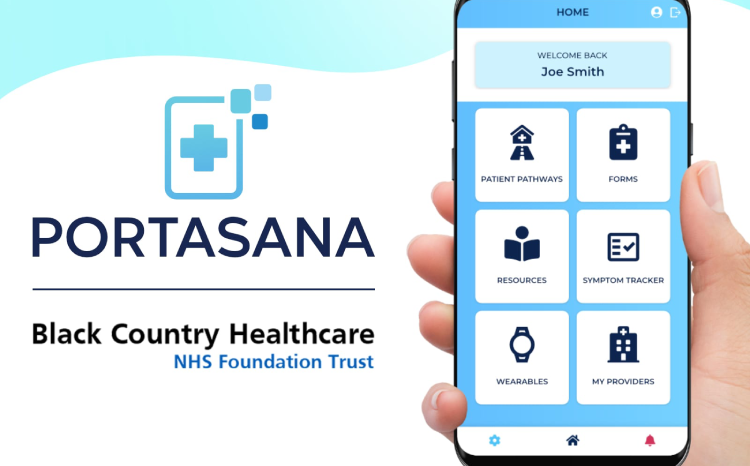CCIO profile: Chris Fokke
- 14 May 2014

Many of the pioneering chief clinical information officers in the UK have taken up their posts to support the roll-out of an electronic patient record system from a single supplier.
Chris Fokke, the CCIO of Hampshire Hospitals NHS Foundation Trust, is in a different position. His organisation, which was formed in January 2012 with the merger of trusts in Winchester and Basingstoke, is taking a ‘best of breed’ approach.
This means linking the patient administration systems at its two district general hospitals and large community hospital in Andover to other major clinical systems through an IBM integration engine, and giving staff access through a portal that is being developed in-house, using open source technology.
“What the clinical teams want is easy access through the portal to the ‘clinical 5’ [the basic suite of functionality promoted by the Department of Health to encourage the clinical take-up of IT],” Fokke says.
“So, we have got lots of our PAS functions in the portal, with single sign-on and context management, and right-click access into the document management and clinical systems. We are developing clinics and clinical noting, and later this year we are hoping to include PACS/RIS [digital imaging]. Then, we should be almost there.”
Through the purple portal
What this means in practice is that when trust staff log-in to the portal, they launch the trust’s intranet homepage. From here, they can select from a number of tabs at the top of the screen that give them access to, for example, clinical documents or the trust’s bed management system.
If they select the ‘inpatient’ tab, they can access a list of the trust’s patients. Fokke says he is “very excited” about this because it uses icons to show whether a patient has been clerked or assigned a consultant, and who that is if they have; making it much easier to see at a glance how treatment is progressing.
From here, staff can access SBAR – situation, background, assessment and recommendation – information. Or they can ‘right click’ to gain access to a drop-down menu of specific systems – such as ICE for pathology or JAC for e-prescribing – with the context management making sure they always view the same patient details in each system.
This work has already led to some significant improvements to the working practices of staff. Fokke says junior doctors often comment that they now have easy access to information that they would traditionally have to collect from a number of people, “and this makes them much more empowered.”
But it is also encouraging further developments. For instance, the trust has developed ‘discharge’ screens that let all the different staff who can be involved in discharge planning see what is happening to a patient – including GPs, who have access to information about patients registered with their practice.
Now, it is working on discharge forms, using Royal College of Physicians headings, that draw information from underlying systems, and can be delivered straight into Emis practice systems.
Or, it is just working on a drug chart that a (medical) consultant designed and did some coding for, which “looks like a proper drug chart” and which can be rapidly scanned and used during ward rounds.
“Really, this is just more right click functionality that we are working on,” Fokke says. “You go into a different patient list and it gives you access to the relevant systems. We just want to get the information and re-use it in different ways.”
From nurse to CCIO
Wanting to work with both clinical and IT staff to deliver developments of this kind is what took Fokke into his CCIO role; although he has spent a good deal of his career preparing to do something like it.
Unusually for a CCIO, he is a registered nurse by background, who did his initial training in New Zealand. He came to England in 1989 for “post-basic neuroscience training”, just as IT started to come into widespread use.
“IT was starting to evolve, but it still tended to be seen as a barrier to clinical care, rather than as something that could be helpful,” he says. “So as I progressed [in my career], I sought to bridge that gap.”
Fokke did a degree in community nursing and then spent ten years working in Bath. Eventually, his employer, the Royal National Hospital for Rheumatic Diseases, sponsored him to take an MSc in IT.
After that, he moved to what was then Basingstoke and North Hampshire NHS Foundation Trust to work on the roll out of discrete systems, such as order communications. Just over a year ago, this job evolved into the CCIO role.
“EHI started pushing the role, and I read some of the job descriptions and thought ‘that sounds like me’,” he says. “Andy Thomas, our director of IT, lobbied for it. It gives me leverage with clinical teams: previously, I would engage with them on a particular project, but they could not say ‘I have got this idea’ and bring it to me.”
Fokke also makes sure that he has plenty of formal contact with people working in the trust. He regularly joins ward rounds, for example, and meets the junior doctors to hear their concerns. To succeed in the role, he says, it is necessary to be visible – and tenacious.
“You are not necessarily leading a big team, as you do as a clinical nurse manager, but you manage across boundaries, which is very powerful.” As the CCIO role has bedded in, he adds, it has thrown up new challenges; such as starting to manage expectations.
For example, as the trust has got into creating electronic forms “with lots of auto-filling” from the systems that now underlie the portal, “we have got more and more people coming forward saying ‘we want one’.”
In response, it has had to find ways to let clinical teams do as much of their own design as possible, so that the small development team – of just four people plus a web manager – can focus on providing technical input.
Future proofing
Unsurprisingly, Fokke thinks all kinds of NHS organisation would benefit from having somebody in the CCIO role. But he is concerned about where the next generation of CCIOs will come from.
At the moment, trusts are drawing on a small pool of clinicians with a long-term passion for IT, who happen to be around and able to take on the new job. They won’t be around forever, and some kind of career planning will be needed to find people to step into their shoes.
“You need clinical experience and you need a keen eye for R&D, and it is not easy to combine the two,” he says. “You wouldn’t just pick somebody to take on another, senior management role; you would promote somebody who had prepared to do it. We need to think about how to bring people on to do this.”
Fokke himself is talking to the University of Portsmouth, about whether he could contribute ideas and experience to young clinicians interested in a pursuing a career with IT. But, in the meantime, he has many more ideas to take forward for his trust.
The new discharge forms, for instance, should start rolling out this summer, after which Fokke is considering a ‘ward round’ tab for the portal, showing a list of the patients to be seen on a ward round and giving staff access to the systems they will need during one.
He is also starting to think through the whole issue of patient access; and how to tackle the relatively new challenge of giving staff mobile access to systems that may or may not translate easily onto the tablets that they increasingly use at home.
Some of these issues will be tough nuts to crack, but overall he has no doubt that “the strategic move by the trust to develop its own EPR is a big opportunity.”




